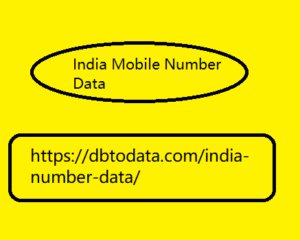Post by account_disabled on Mar 10, 2024 3:04:11 GMT -6
The evolution of art has always been conditioned by technological changes that have introduced new tools, supports and techniques. The appearance of computers laid the foundations for what would be defined, in the 1980s, as digital art, i.e. creations created thanks to hardware and software technologies. A concept that can be traced back to the development of the AARON painting software , created by the artist Harold Cohen, capable of producing elementary paintings, which then also crossed the path of generative art, the one conceived and created by algorithms. For a year now, interest in cryptographic art has grown, i.e. that referring to works in which the artist decides at the beginning of the creative process to produce something destined to be linked, promoted, exhibited and traced on the blockchain network (Andrea Concas, CryptoArte).
A more extensive definition could also include works that are "tokenized" or India Mobile Number Data transformed into NFTs after their creation. In this way, its origin, authenticity and ownership are guaranteed. Furthermore, the associated smart contract could guarantee additional royalties to the creator with each change of ownership. from left: Pak, Beeple, XCopy The crypto art market Most of the NFTs traded on the market are referred to as so-called collectibles . Those linked to artistic projects represent only 9%, but the volumes are still noteworthy and growing. The CryptoArt market capitalization is over 1.3 billion dollars and the works sold have exceeded 2.3 million units (data updated on CryptoArt.io ). A concrete impulse was given by historic auction houses such as Christie's, Phillips and Sotheby's who started selling NFTs. In particular, the first that beat a work by Beeple , with an initial value of 100 dollars, for 69,346,200 million dollars.

The hybridization between art and blockchain technology is turning the entire art system upside down. New generations of artists, collectors, gallery owners are born and the old ones are forced to study to survive in this new world. First of all, a new scene of artists who have not followed the traditional academic and professional path has emerged. They are often computer graphics experts, art directors, web and game designers, comfortable with the tools and techniques of digital art, but also explorers of the crypto world. I don't think we can talk about a movement of crypto artists, in the sense of a group characterized by uniformity of styles, objectives and poetics. Indeed, it is a very varied world, although probably, over time, common styles and clear currents will emerge.
A more extensive definition could also include works that are "tokenized" or India Mobile Number Data transformed into NFTs after their creation. In this way, its origin, authenticity and ownership are guaranteed. Furthermore, the associated smart contract could guarantee additional royalties to the creator with each change of ownership. from left: Pak, Beeple, XCopy The crypto art market Most of the NFTs traded on the market are referred to as so-called collectibles . Those linked to artistic projects represent only 9%, but the volumes are still noteworthy and growing. The CryptoArt market capitalization is over 1.3 billion dollars and the works sold have exceeded 2.3 million units (data updated on CryptoArt.io ). A concrete impulse was given by historic auction houses such as Christie's, Phillips and Sotheby's who started selling NFTs. In particular, the first that beat a work by Beeple , with an initial value of 100 dollars, for 69,346,200 million dollars.

The hybridization between art and blockchain technology is turning the entire art system upside down. New generations of artists, collectors, gallery owners are born and the old ones are forced to study to survive in this new world. First of all, a new scene of artists who have not followed the traditional academic and professional path has emerged. They are often computer graphics experts, art directors, web and game designers, comfortable with the tools and techniques of digital art, but also explorers of the crypto world. I don't think we can talk about a movement of crypto artists, in the sense of a group characterized by uniformity of styles, objectives and poetics. Indeed, it is a very varied world, although probably, over time, common styles and clear currents will emerge.



